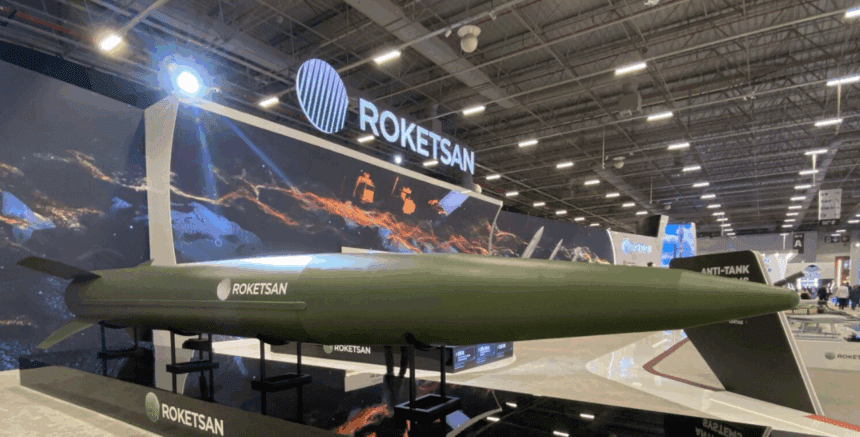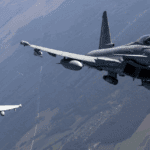Turkey on Tuesday revealed its first hypersonic ballistic missile, the Tayfun Block-4—marking a significant milestone in the country’s efforts to become a major player in next-generation weapons technology. The unveiling took place on the opening day of the 17th International Defence Industry Fair (IDEF 2025) in Istanbul, where Turkish officials also introduced a suite of other advanced systems developed by the state-owned defense giant Roketsan.
The Tayfun Block-4, a sleek and formidable system, is designed to travel at hypersonic speeds—defined as anything above Mach 5, or more than five times the speed of sound. While its full specifications remain under wraps, defense experts estimate it can reach targets over 800 kilometers away. Its velocity and maneuverability allow it to evade most existing air defense systems, placing it in a select class of high-threat, high-value weapons that only a handful of countries—such as the United States, China, and Russia—currently possess.
President Recep Tayyip Erdoğan, speaking at the fair, praised the achievement as evidence of Turkey’s growing independence in defense. “Today, we are not only witnessing the development of the Turkish defense industry but also the march of a nation toward independence,” he said. His remarks reflected a long-standing theme in Turkish defense policy: the pursuit of self-sufficiency amid growing geopolitical challenges and periodic international embargoes.
But the Tayfun wasn’t alone on stage. Roketsan introduced five other systems that reflect the evolving needs of modern warfare—ranging from smart munitions launched from drones to space-launch technologies. Among them was a long-range air-to-air missile designed for Turkey’s upcoming KAAN fighter jet and the KIZILELMA unmanned combat aircraft. Another was a 35-kilogram drone-launched weapon, equipped with artificial intelligence, capable of striking air or ground targets more than 100 kilometers away.
There was also the IHA-300, an air-launched cruise missile developed for use by high-altitude drones and fighter jets, with a reach of over 500 kilometers. In the maritime realm, Roketsan showcased Akata, a submarine-launched cruise missile intended to hit both land and sea-based targets. Perhaps the most futuristic of the new systems was the Şimşek-2—a two-stage space launch vehicle designed to deliver payloads of up to 1.5 tons into low Earth orbit, signaling Turkey’s deepening interest in dual-use space technology.
These announcements come at a time when Turkey finds itself navigating a complex geopolitical landscape. Tensions in the eastern Mediterranean—particularly with Greece over maritime boundaries—remain unresolved. While officials did not directly link the new systems to regional disputes, analysts say that such high-speed, long-range capabilities will inevitably factor into regional security calculations. Russian media called the Tayfun Block-4 a “big step,” while defense forums across Europe and Asia noted its potential to reshape procurement priorities and partnerships.
IDEF 2025 isn’t just about technology—it’s also about diplomacy. Shortly after the unveiling of the Tayfun, Turkish Defense Minister Yaşar Güler and UK Defence Secretary John Healey signed a memorandum of understanding for the potential sale of Eurofighter Typhoon jets to Turkey. The deal followed a major policy shift from Germany, which had previously opposed exporting the aircraft to Turkey but has now given its approval. Turkey has been negotiating to acquire 40 of the multi-role fighter jets, which are produced by a consortium of four European countries.
The Eurofighter deal is seen as an important step in modernizing Turkey’s air force following its removal from the U.S.-led F-35 program in 2019. That exclusion, triggered by Ankara’s purchase of the Russian-made S-400 air defense system, marked a turning point in Turkey’s defense strategy. Since then, the country has ramped up investment in its domestic industry and explored alternative partnerships with both NATO and non-NATO countries. While progress on the Eurofighter front is promising, Turkish officials have indicated that if the opportunity to rejoin the F-35 program were to arise, Ankara would be open to reconsidering its procurement plans.
Some defense analysts believe the Eurofighter negotiations themselves may serve as leverage—part of a broader diplomatic effort to restore trust with Washington and recalibrate Turkey’s position within NATO’s defense architecture.
IDEF 2025, which runs through July 27, is hosting over 1,300 defense companies from 44 countries, including major industry players such as Lockheed Martin, Airbus, and Leonardo. But beyond the technology, the fair has become a gathering point for global defense diplomacy. Turkish officials held a series of bilateral meetings with representatives from Belgium, Libya, and Syria, exploring opportunities for future cooperation and regional security dialogue.



